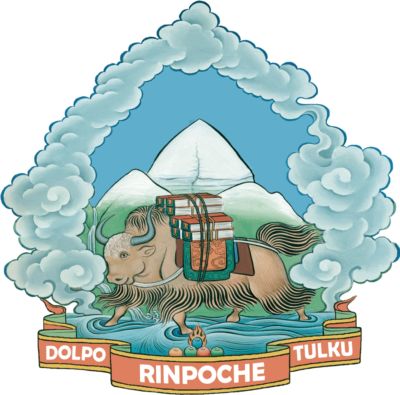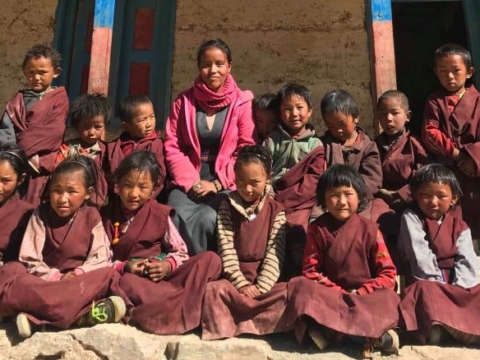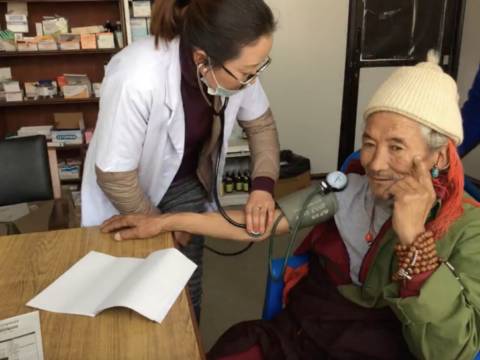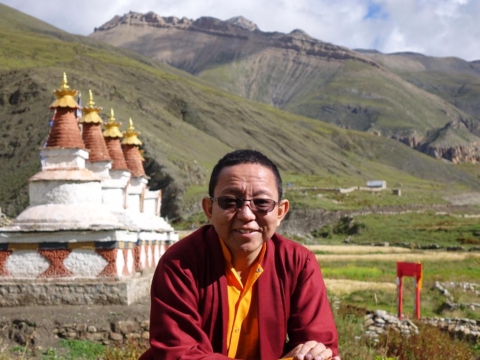Click on any picture to enlarge it and enjoy each photo individually.

Mantras carved in stone

The arduous path to Dolpo

The Saldang Monastery

Yaks instead of trucks

Yaks are the best means of transportation

The traditional construction method in Dolpo

Dolpo Tulku Rinpoche in his homeland

View from the traditional clay roofs

Smoke offering in the monastery

Lush green in an otherwise barren landscape

Männer bei einem traditionellen Pferderennen

Women in traditional clothing

Men in traditional clothing with bows

Lay practitioners performing a spiritual dance

Dolpo Tulku Rinpoche’s father during a spiritual dance

Children in traditional clothing perform a dance

Dolpo Tulku Rinpoche’s mother at Lake Phoksundo

Mani stones with mantras carved into them

The smallest child is transported in the basket

View from the monastery in Dho Tarap

View of the snow-capped Himalayan mountains

The 8 stupas in front of the monastery in Dho Trarap

Women in traditional clothing

Three yogis (on the right, Dolpo Tulku Rinpoche’s father)

A woman at work

The fastest means of transport in Dolpo

A herd of yaks

Holy scriptures carved in stone

The snow-capped peaks of the Himalayas
Dolpo is located in northwestern Nepal north of the Dhaulagiri massif and is inhabited predominantly by a Tibetan-speaking population. It is the most remote and at the same time the largest of Nepal’s 75 districts in terms of area. Buddhists make up the majority of the population with about 13,000 inhabitants.
In the “Inner Dolpo” (also called “Upper Dolpo”), which can only be reached by crossing passes more than 5,000 meters high, there are the highest inhabited valleys on earth. Nearly 90 percent of the region lies more than 3,500 meters above sea level. Some 5,000 to 7,000 people live here.
This makes the Upper Dolpo one of the most sparsely populated areas of Nepal. The inhabitants of the Dolpo live from agriculture, cattle breeding and some trade with Tibet. The cattle breeders are usually semi-nomads and mostly stay with their herds on the high pastures during the summer months.
Over 90 percent of the population lives below the poverty line. The level of education is extremely low, and the average life expectancy is about 50 years.
Due to the hard agricultural work that defines life in the high valleys, the people of the Dolpo suffer from certain diseases and ailments, some of which are also due to poor sanitary conditions. Instructions and a general increase in the level of education are therefore necessary in order to reduce and prevent diseases and suffering.
There are no roads, hospitals or electricity, and there is no technical equipment to facilitate the work in the fields. All family members, including the children, have to help with the time-consuming work. The nearest airport is up to 5 days walk away. Goods have to be transported by plane from Kathmandu to Juphal in the southern Dolpo. From there they are taken by mules and yaks to the inner Dolpo. This takes many days and is very costly.
During the extremely harsh winter, the population is often cut off from the outside world for months. Such circumstances make medical care almost impossible. Infant mortality is close to 50 percent.
What Dolpo Tulku is particularly committed to in Dolpo
Education
Education imparts knowledge and is the basis for sustainable improvements of living conditions in the Dolpo. Therefore, the DTCF is committed to winter schools, educational sponsorships and Tibetan teachers in the Dolpo.
Health
Health care is a vital necessity, but it is very difficult to access in the remote region of Dolpo. The DTCF supports the health care of the Himalayan population with a free annual winter clinic, the maintenance of health stations in the Dolpo and their supply with medicines and vaccines.
Culture and Environment
Due to the impact of globalization and climate change, the environment and culture of the Dolpo region are facing great challenges. DTCF supports renovations of monasteries, restoration of art objects, and preservation of Dolpo Himalayan culture.




